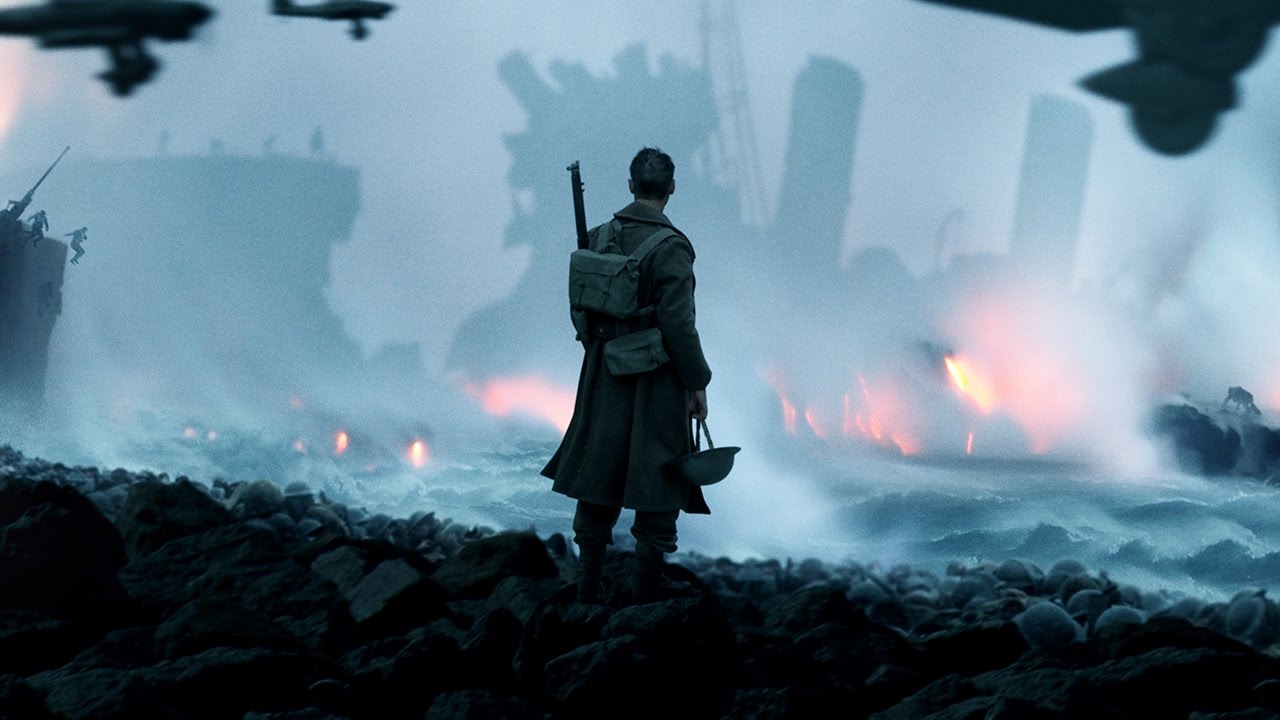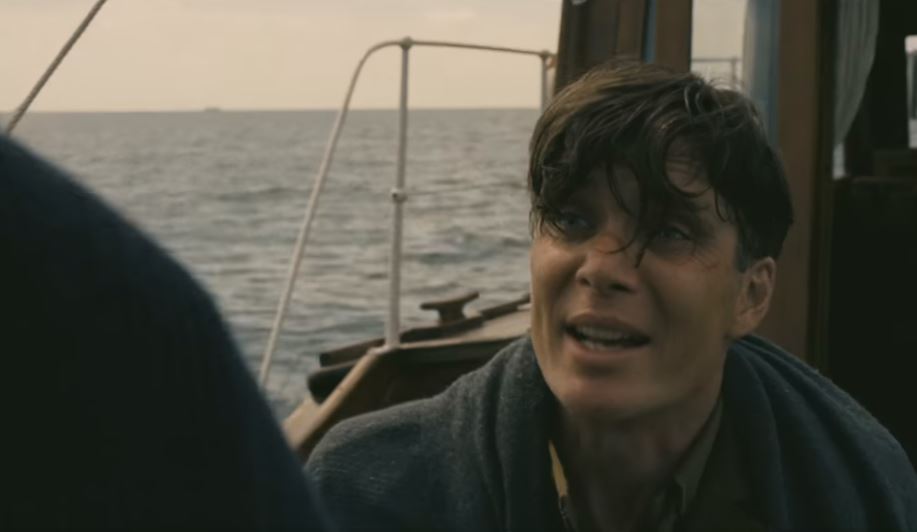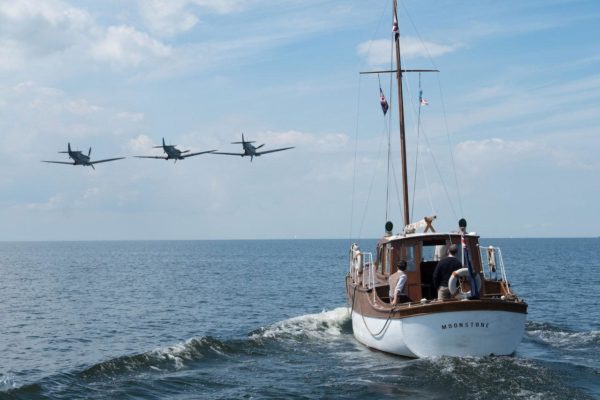
There is a moment late in “Dunkirk,” Christopher Nolan’s ferociously vivid account of the evacuation of over 300,000 cornered British soldiers from France during World War II, when a man accepts that he is going to die.
He’s a naval commander named Bolton and since he’s played by Kenneth Branagh, every word he speaks carries a calm dignity that would have made Alan Rickman crack a sly smile. Yet as a German plane swoops overhead, the formidable Bolton realizes that these are his last moments and closes his eyes, surrendering to his fate.
It’s odd that one of the most memorable parts of a film about stratospheric triumph (it has been speculated that if the evacuation had failed, the war would have tilted in Hitler’s favor) is a moment of defeat.
Then again, Nolan (who also wrote the film) has never been one to let expectations ruffle his impeccable blonde coiffure. He is, after all, the filmmaker who made sweet narrative music out of a backwards murder mystery in “Memento” and bizarrely and beautifully turned a bookcase into a cosmic conduit between an estranged father and daughter in “Interstellar.”
“Dunkirk” (which uses composite characters) shares some time-bending DNA with Nolan’s previous films (more on that later), although it’s certainly an earthier affair. Superheroes may fascinate Nolan (note his three dates with the Dark Knight), but the daredevilry in “Dunkirk” isn’t like anything from the average comic book. Here, there are no skyscrapers to leap off of—there’s just soldiers struggling to survive, whether they’re trying to escape a torrent of saltwater pouring through bullet holes in a boat, or swimming to safety after a torpedo strike.
“Dunkirk” is also, like all of Nolan’s films, great fun (along with “Gravity” and “Mad Max: Fury Road,” it’s one of the zestiest suspense thrillers of the decade). Yet it succeeds because rather than simply entertain, Nolan immerses you in the terror, sacrifices, and betrayals that his characters endure.
Along with the following six reasons, that’s what makes “Dunkirk” (which takes its title from the French town that British forces were stranded in and around) one of the greatest war films ever made—and why it makes you care so deeply about moments like Bolton accepting defeat as his world crumbles around him.
1. It reveals character through action

The characters of “Dunkirk” don’t talk much, which makes them rarities in Nolan land. All of his previous films feature multiple scenes where men (and, unfortunately, only the occasional woman) pause to ruminate on an thorny topic (like, in the case of “Batman Begins,” how to respond when your hometown is beset with a serious ninja infestation). But the heroes of “Dunkirk” don’t have time for delicate verbal tête-à-têtes; that kind of thing is a luxury when you’re stranded on a beach in northern France, vulnerable to bombings while you wait to be picked up.
You might think that without his famously baroque dialogue (one of the delights of Nolan’s films is that’s he’s unafraid of grandiose, heartfelt declarations like, “Once you’re a parent, you’re the ghost of your children’s future”), Nolan would about as useful as Batman without a grappling hook. Yet in “Dunkirk,” he proves himself so shrewd an observer of human behavior that the idea of a wordier version of the film seems superfluous and pointless.
That’s because when it comes to the soldiers, Nolan is attentive to every flicker of feeling, every decision. When Tommy (Fionn Whitehead)—the British private who is the film’s protagonist—and a silent soldier named Gibson (Aneurin Barnard) hoist a stretcher bearing a wounded comrade in the hopes that he’ll be their ticket aboard a boat bound for England, Nolan makes you feel their hunger for escape; when a shell-shocked victim of a U-boat attack (Cillian Murphy, playing a character identified in the credits only as “shivering soldier”) abruptly bats away a cup of tea, you feel the panic simmering inside him; and when the steadfast Spitfire pilot Farrier (Tom Hardy) wordlessly makes a momentous decision in his cockpit, it’s easy to make out the moment when he commits to his choice (even though his face is covered by a smothering pilot’s mask).
These harrowing scenes are shuffled together in a multi-tiered time frame (the land-based action lasts a week, the sea-based action lasts a day, and the air-based action lasts an hour). But unlike “Memento” and “Interstellar”—which approached time as a Rubik’s cube to be wrestled with and unlocked—“Dunkirk” unfolds smoothly and clearly, allowing the actions of the soldiers wash over us.
That’s a feat that the Nolan of years past might not have managed, but in “Dunkirk,” he proves that he understands the power of letting an audience lean back and absorb his creation, rather than spinning a web of puzzles that he has to talk them through (not that there’s anything wrong with a wordy Nolan puzzle, as this critic and any Nolanite will tell you).
2. It’s an exhilarating and profound suspense thriller

While the ghosts of myriad films loom over “Dunkirk” (the fragmented scope of D.W. Griffith’s “Intolerance” is referenced by Nolan’s suave time jumps), Nolan made clear in an “Access Hollywood” interview that there was a particular film that he wanted it to be different from: “Saving Private Ryan.” While he praised Steven Spielberg’s “amazing film,” he added that “it has the language of horror and you take your eyes off the screen…we realized what we want is suspense, we want a film that you can’t take your eyes off and just pull you in, keep you there the whole time.”
Mission accomplished. “Dunkirk” successfully sucks you into a whirlpool of tension because Nolan uses suspense not only to create an addictively entertaining experience, but to draw us close to Tommy and his comrades. Suspense, after all, is the language of feeling, and by forcing us to feel the desperation of the characters, Nolan offers us a deep appreciation not only of noble men like Farrier, but compromised souls like Alex (who is improbably and skillfully played by One Direction’s Harry Styles), a soldier so terrified that his self-interest rises to toxic, destructive levels.
Like all suspense thrillers, “Dunkirk” is powered by a question (will the soldiers survive?) and generates its extraordinary passages of armrest-clenching unease by complicating that question with obstacles.
In the air, the challenge is Farrier’s broken fuel gage (which forces him to write notes in white ink on his dashboard to remind him how much fuel remains); at sea, Murphy’s nameless man threatens a civilian named Dawson (Mark Rylance), who has taken his boat to aid in the rescue effort with help from his son Peter (Tom Glynn-Carney) and his pal George (Barry Keoghan); and on the beach, Tommy’s turbulent search for a boat bound for England is foiled by seemingly ceaseless crises (the first of his potential rides home sinks).
There’s no time to rest, in other words, which marks yet another way in which “Dunkirk” diverges from Nolan’s past work (some of the best parts of the “Dark Knight” trilogy were the quiet moments shared by Christian Bale and Michael Caine—who makes a garbled vocal cameo in “Dunkirk”—in the shadows of the Batcave). But it’s a necessary departure because it was arguably the only way to create the illusion that you’re on the beach with Tommy and company, waiting for a rescue that at times seems as if it will never come.
3. It uses sounds and images to transport you to another time and place

While the war for the best sound editing Oscar promises to be brutal next year (the deliciously bug-filled soundscape of James Gray’s “The Lost City of Z” is just one of an army of contenders), “Dunkirk” arguably has the year’s single best sound effect: the sharp but soft noise of a soldier setting his helmet down on the ground so he can take a drink from a hose—a tangible, unmistakably real detail that makes you feel as if you could step through the frame and onto a real street in France, circa 1940.
It’s just one of many ways that Nolan, who shot the movie on large-format film, uses his discerning eyes and ears to immerse us in a bygone era. Sometimes, that means going for an obvious but effective flourish (the rough, pummeling clang of the film’s first barrage of gunfire is unforgettable), but “Dunkirk” also deploys subtler transportive tricks, like when cinematographer Hoyte van Hoytema (effectively recycling a technique he and Nolan used to film the battered spaceships of “Interstellar”) brings the camera so close to an airplane that you feel as if you can make every detail of its outer shell.
That precision calls to mind Nolan’s summation of his approach to his Batman movies in Film Comment: “You want to really understand what things would smell like in this world, what things would taste like, when bones start being crunched or cars start pancaking.” Well, no cars get pancaked in “Dunkirk,” but Nolan’s attention to detail (which is enhanced immeasurably by the gorgeously grainy look of Hoytema’s cinematography) has the same effect: It temporarily overrides the fact that you’re watching a series of artificial images flit across a screen.
Or, to put it another way, the difference between watching most 2017 Hollywood films and watching “Dunkirk” is akin to the difference between spooning down a bowl of frozen yogurt and gobbling up a scoop of vanilla bean ice cream in a waffle cone.